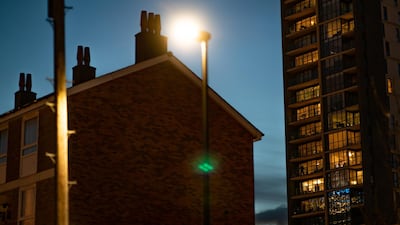An investigation into the prevalence of coronavirus among minority groups in the UK has revealed relatively fewer cases in areas where Muslim communities make up a high proportion of the population.
Lower levels of Covid-19 in certain parts of Britain were called “striking” in a report by research group Webber Phillips.
Its analysis of the progress of the disease sought to establish socio-economic explanations for variations in the data for the pandemic so far.
The authors suggested that low figures in places such Tower Hamlets in London and Blackburn in Lancashire could be linked to population make-up and daily practices in some communities.
It suggested that ablutions before prayers may have helped to curbed the spread of the disease in some places.
"If one key to stopping transmission of the virus is hand washing, might a faith community, many of whose members ritually wash before five times a day prayers, have something to teach the rest of us?" the group's director, Trevor Phillips, wrote in The Times.
Mr Phillips has faced accusations of making inflammatory statements against Muslims.
He has denied the criticism, claiming to highlight issues that should concern society as a whole.
The controversies have been magnified by Mr Phillips's former role as head of Britain’s watchdog on community relations, the Equality and Human Rights Commission.
In March he was suspended from the Labour Party for comments about the outlook for Britain’s Muslim community.
The Webber Phillips investigation found that 13 of 17 Covid-19 hotspots in England and Wales had non-white populations above the national average.
The British government has launched an official review into the heavy toll the virus has taken on people from black, Asian and minority backgrounds.
As a percentage of the population, the communities represent 13 per cent of England and Wales but 44 per cent of health service staff.
Of the 81 medical staff who have died, 50 are from minority backgrounds.
Larger rates are also reported in the wider death figures.
Local authorities such Brent and Harrow in London, both with above 50 per cent non-white populations, appeared in the top four of local reporting districts.
But bucking the trend among areas with large minority groups were predominantly Muslim local authorities.
“Most striking is the absence from this list of virtually all the English local authorities where the dominant minority group is Pakistani or Bangladeshi Muslim: Tower Hamlets, Luton, Slough, Redbridge, Waltham Forest and Blackburn,” the report said.
It gave as an example Tower Hamlets, the area with the highest proportion of Pakistani or Bangladeshi Muslims in the country.
It had significantly lower Covid-19 cases than neighbouring Southwark, which has a large African population.
The Webber Phillips report said that the sharp difference between Muslim and other minority groups meant vulnerability is “far more likely to be environmental or behavioural”.
The report admits that for more concrete conclusions to be reached, more research is needed.
Mr Phillips also said other behavioural practices among Pakistani and Bangladeshi communities might have led to the lower rates of infection.
Jabeer Butt of the Race Equality Foundation has called for a government inquiry into the impact of the coronavirus.
"We published an analysis shortly after the start of the lockdown, which noted that while the majority of [minority] communities were comparatively younger, the impact of discrimination [higher rates of poverty, overcrowding and less access to health care] increased the risk of the impact of Covid-19," Mr Butt said in a letter published on Wednesday.













